For many travelers, catching sight of the elusive aurora borealis is a highlight of a trip to our planet’s northern reaches. While you’re most likely to see the northern lights from places like Alaska, Canada, or Europe’s Nordic countries, there are times of year when you can also see them right from the continental United States — meaning your chance to see the aurora’s dazzling glowing bands this winter just got a lot better.
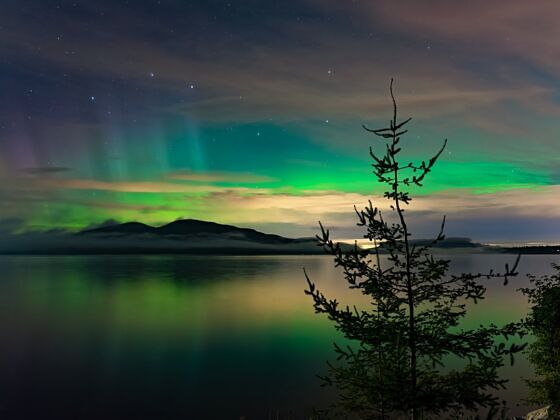

The Best Places to See the Northern Lights in the Continental United States
What are the northern lights?
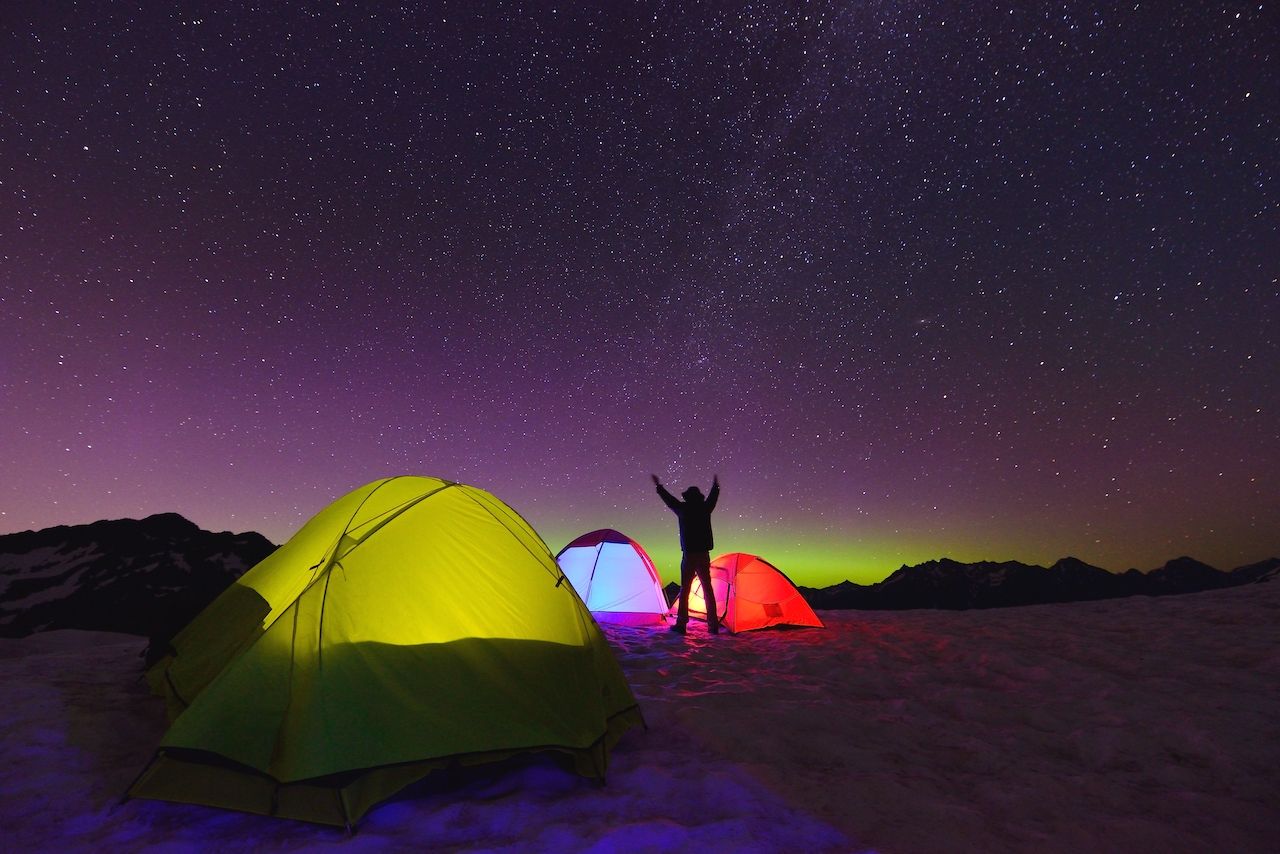
Photo: Lijuan Guo/Shutterstock
Tge northern lights are produced when protons and electrons from the sun reach the atmosphere. While those solar particles are generally pushed away from Earth, some slip through the magnetic poles. The colors they produce — be they green, purple, or white — depend on which gases they excite in different layers of the atmosphere.
Solar activity ebbs and flows in multi-year cycles, and this year it’s expected to pick up in the winter of 2024-25. Regardless of predictions, you should always be patient when looking for the aurora and be ready to content yourself with a sweeping view of the night sky should the northern lights not appear.
Consult the National Oceanic and Atmospheric Administration’s aurora forecast for where and when the northern lights might be spotted, and how likely their appearance at a given time will be. Also, check the weather forecast, since you want as clear skies as possible. Also, when you do head north, look for areas that are less populated and less affected by light pollution — such as national parks, state parks, and protected wildlife reserves — and places where you can have an unobstructed northward view.
Minnesota

Photo: Matthew Ben Herberg/Shutterstock
Minnesota is one of the most spectacular places in the continental US to catch a glimpse of the northern lights. At the upper edge of the state on the Canadian border, lake-filled Voyageurs National Park is an excellent place to park yourself, set up your tripod and camera, and await the aurora. Yet you don’t necessarily need to go that far north, as Minnesota’s Cook County can offer views of the northern lights over Lake Superior. In fact, Cook County is so proud of its low light pollution that it hosts an annual Dark Sky Festival each December.
Michigan

Photo: ThroughLensPhotosNVideos/Shutterstock
Michigan has long been known as a top stop in the lower 48 to catch a glimpse of those elusive northern lights. The Upper Peninsula, a favorite summertime destination, is also the best place to go aurora hunting. Since you want to look northwards to see the aurora, positioning yourself at the top of the peninsula and looking ahead — without trees or mountains in your line of sight — will give you the best vantage point to see the northern lights. Due west of Mackinaw City is the Headlands, which is recognized as an International Dark Sky park.
Wisconsin

Photo: Paul Sparks/Shutterstock
Wisconsin’s Door Country is a favorite weekend getaway for Wisconsites and more with scenic limestone cliffs over Lake Michigan and excellent dining options. It turns out that it’s also a spectacular place to be after the sun has set and long after you’ve had dessert. It’s then that, when conditions are right, you can get yourself to the upper edge of the peninsula and look out over that same Great Lake. You can try on the Green Bay side of the peninsula, as you’ll have more northerly views, or on the outer edge of Newport State Park on the eastern side of the peninsula.
Montana

Photo: davidmarxphoto/Shutterstock
Montana doesn’t just have latitude, it has emptiness and as little light pollution as you could hope for in the lower 48. Glacier National Park offers even more than its own 1.5 million acres of wilderness since it shares a national border with Canada’s Waterton Lakes National Park. Three years ago, the two parks were named the first transboundary International Dark Sky Park by the International Dark Sky Association. It also features world-class camping areas for stargazing. From one of the park’s lakes, the views of the northern lights can be dazzling. The largest of these, Lake Macdonald, is a top aurora-viewing location.
Washington

Photo: Joel Askey/Shutterstock
In the Puget Sound, between Washington state and Canada’s Vancouver Island, lie the small, wooded San Juan Islands. When solar activity is high, these isles can be excellent viewpoints for the aurora borealis — particularly from the north end of islands like Cypress or Orcas. Just note that the Pacific Northwest is notorious for its wet winters, so be sure the weather forecast calls for dry, clear skies. Experienced hikers may want to head to North Cascades National Park, one of the least-visited national parks in the country, but you can also take a ferry to the islands for a light show out over the water.
Maine
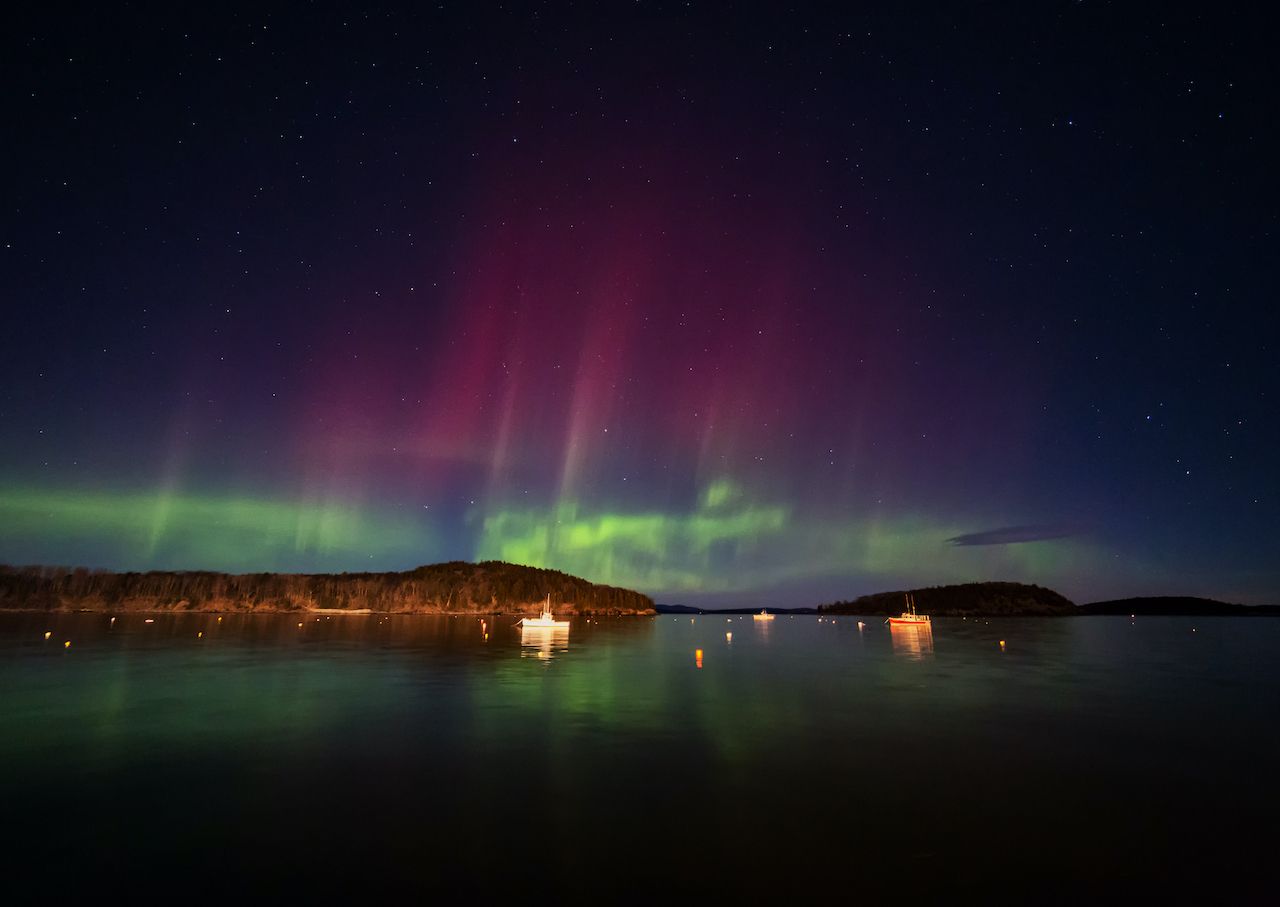
Photo: Saptashaw Chakraborty/Shutterstock
The northern lights have actually been seen from Bar Harbor, Maine, at the edge of Acadia National Park. So if solar activity is heavy, and you’re lucky, you might spot them there. For better viewing possibilities, try heading farther north to Millinocket Lake. It’s just south of Baxter State Park, which is much bigger than Acadia and is one of New England’s least-crowded state parks. Being by the lake gets you further from urban light sources and offers a broader horizon view with which to take in the swirls of green, purple, or white, should they appear.
New Hampshire
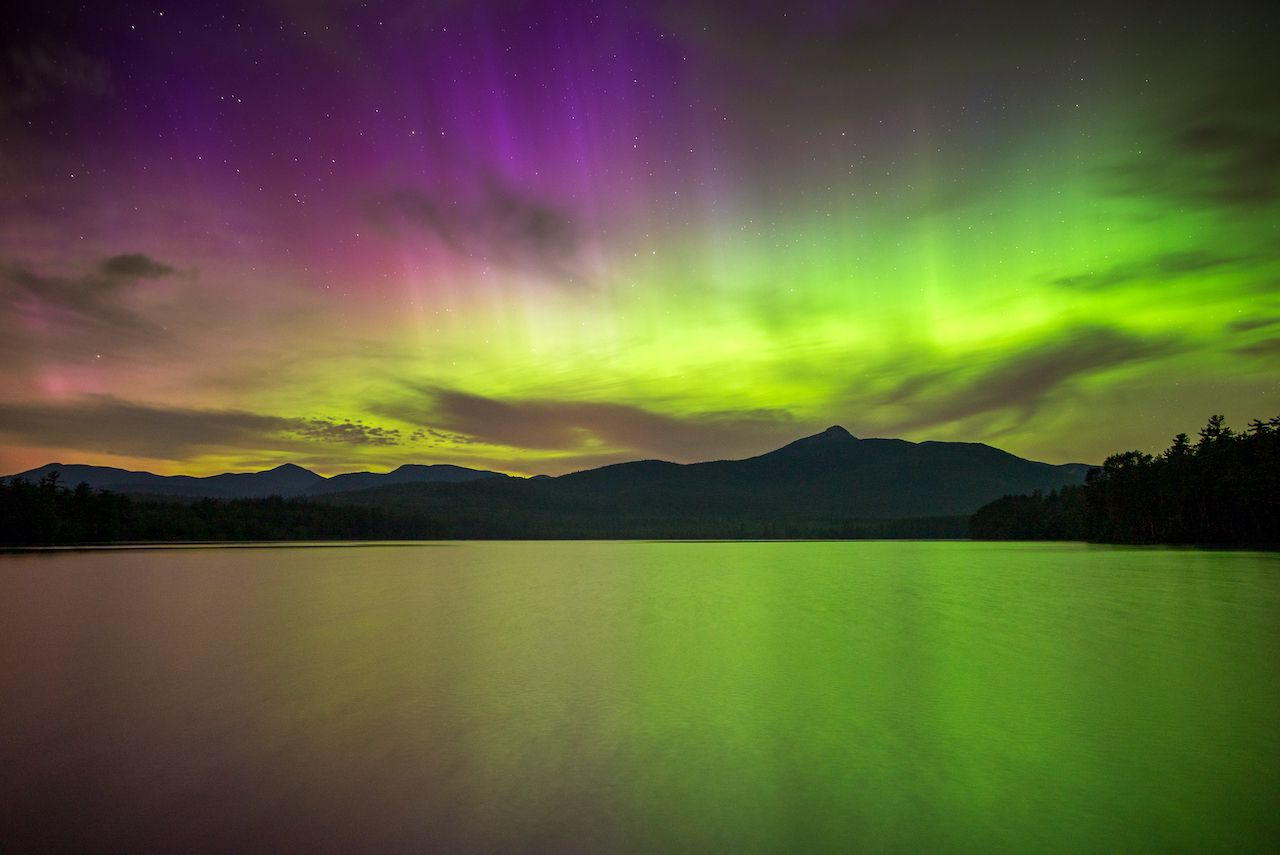
Photo: Christopher Georgia/Shutterstock
While New Hampshire isn’t as far north as some of the other states on this list, it is sparsely populated, so you are spared the light pollution that can obscure aurora viewing. However, it’s mountainous, so you need to find a place where you can get an unfettered northward view. You could head to the south shore of one of its many lakes in the White Mountains. A more ambitious approach would be to hike to the top of a mountain. New Hampshire’s 6,288-foot Mount Washington is in fact the highest peak in the Northeast, and if the aurora is occurring, you’re sure to see it from there.
Vermont
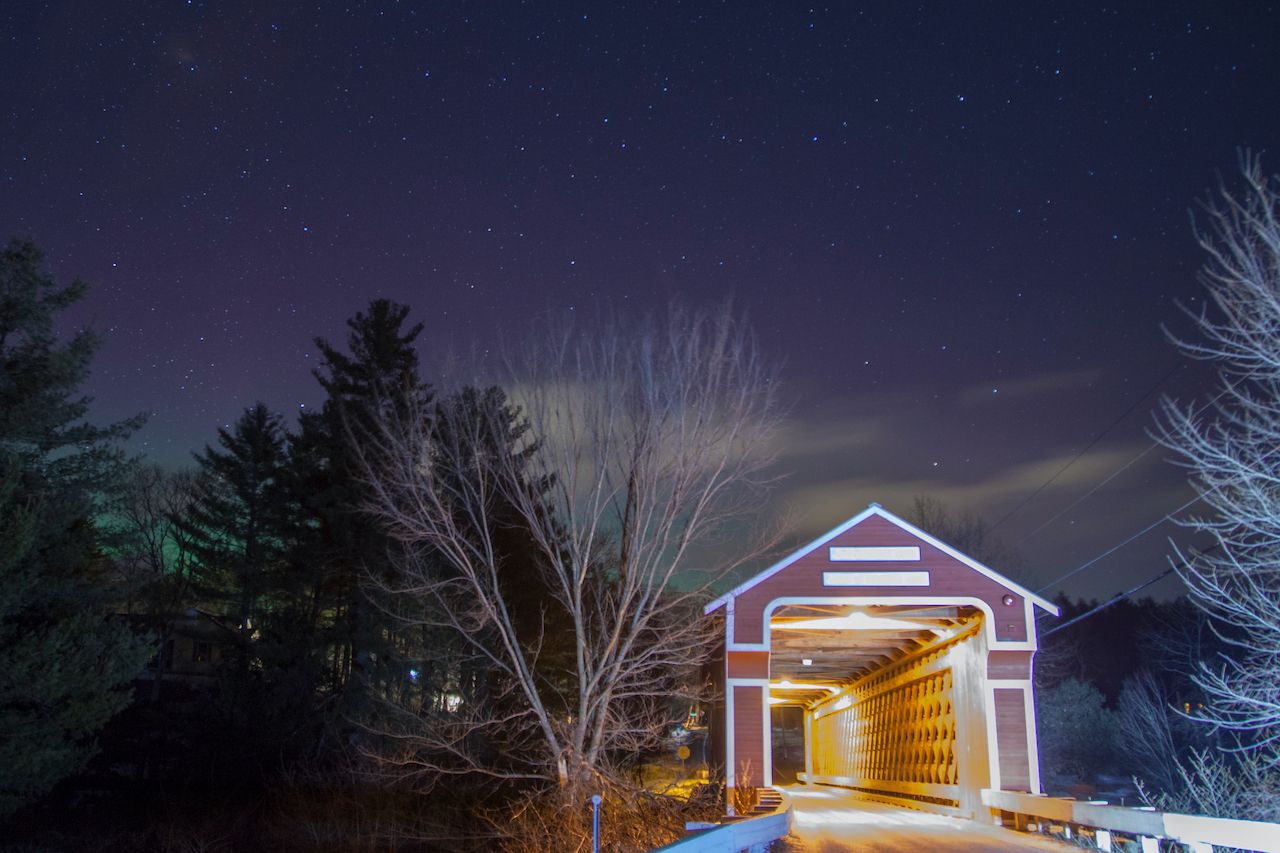
Photo: HDjeff/Shutterstock
Northern Vermont isn’t often treated to the northern lights, but when it is, it’s spectacular. A good place to look for them is from Stowe, which is pretty far north but not yet butting up against the urban lights from the greater Montreal area across the border. Mallets Bay on Lake Champlain will give you northerly views out over the water, but the aurora’s brightness might be somewhat dampened by light from Burlington, the state’s biggest city.